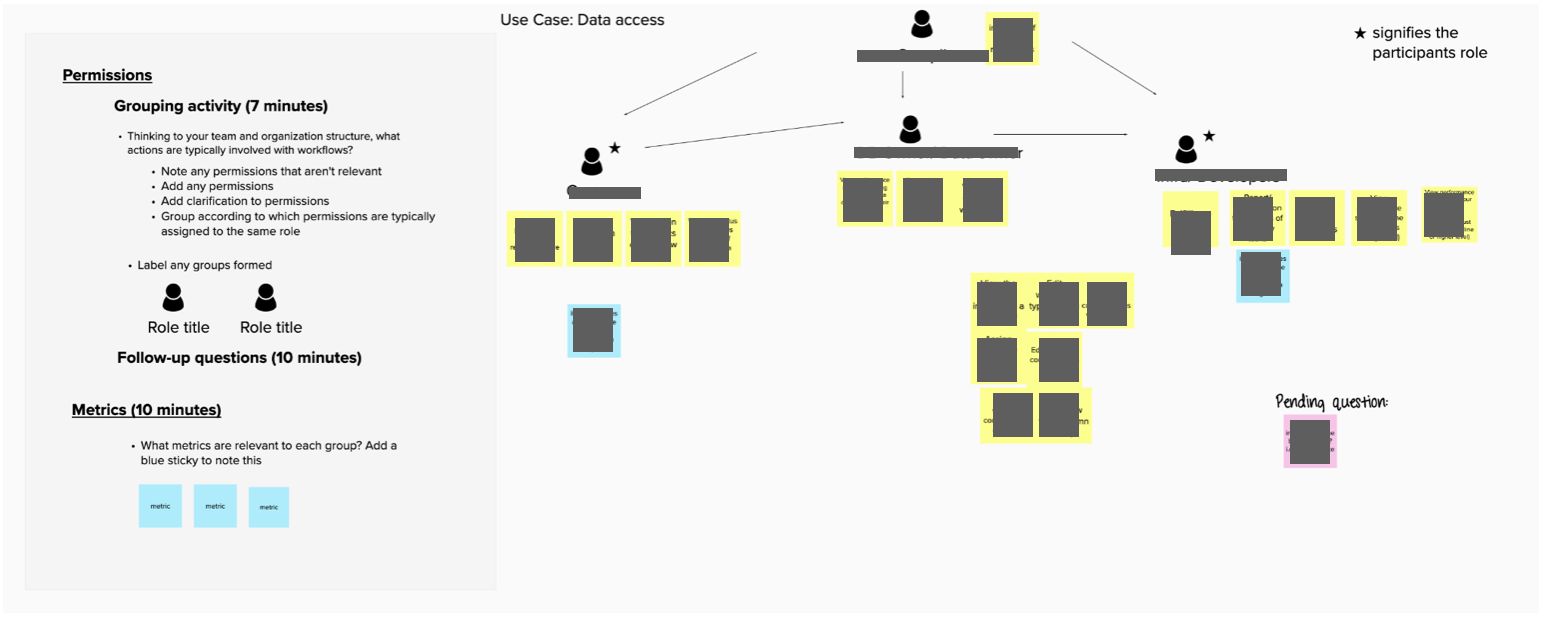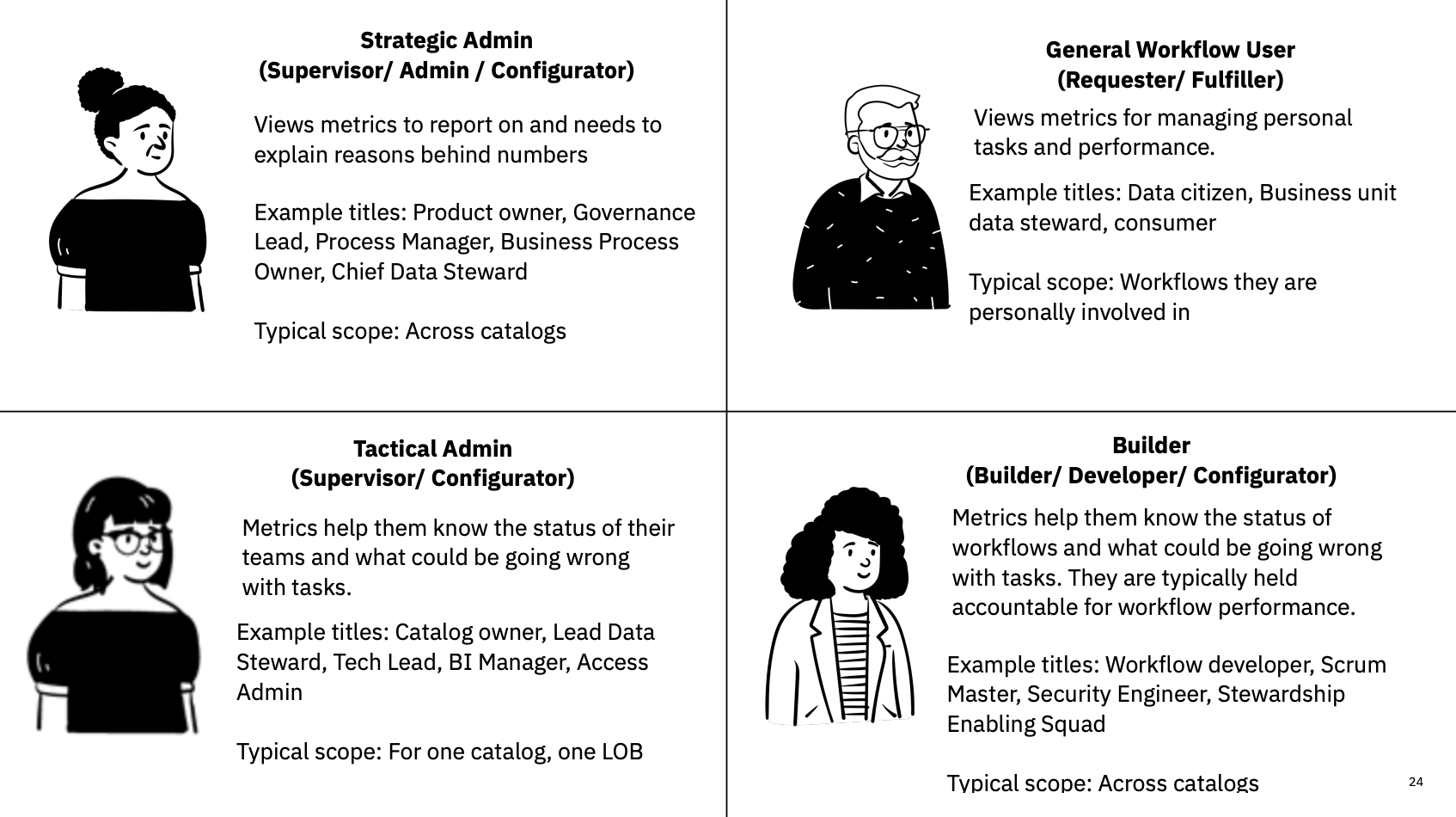Interviews to Understand Monitoring and Permissioning Needs
Our Goals: Understand the monitoring and permission needs behind automated business processes and how these differ among different end user roles.
My Role: Lead researcher
The Method: Secondary research, interviews, and ecosystem mapping
Our Process:
Stakeholder Interviews
Secondary Research and Playback
Primary Research Interviews and Playback
Background: The product team was continuing work on incorporating workflows or automated business processes into the product. As the feature gets built out pending questions remained:
What are the distinct user types expected to be involved with the feature?
What are the necessary permission granularities each will need?
What KPI’s for monitoring are necessary for each type of user?
Stakeholder interviews:
We spoke to stakeholders across design, product management, and development to understand the key questions and knowledge gap areas.
In addition to our own product stakeholders we spoke to those also involved in workflow features that work in adjacent product areas.
Secondary Research:
We searched through past studies that had workflows or business process automation as a topic as well as our database of customer observations to see what had been shared on the topic.
This phase allowed us to compile an initial understanding of the following:
Key user types
Permissions relating to each user type
Key performance indicators that each user type is interested in
Our primary interviews would allow us to add to this understanding and validate or reject these Initial hypotheses.
Primary Research Interviews:
Participants recruited came from 3 sources:
Internal IBM Global Chief Data Office employees
External Screened workflow users
End-users of Watson Knowledge Catalog interested in workflow capabilities
We spoke to a total of 7 participants.
Study design: We spoke to participants for one hour. During that hour we asked initial introductory questions to understand their job roles and involvement in workflows, for the later half we had participants work in Mural.co (a digital whiteboard tool) to create an ecosystem map that gave an overview of the roles that interact with workflow, the visibility they need and actions they need to take, and the metrics they are interested in (see example below)
Mural activity conducted with each participant. Please note that areas have been obscured to protect the information shared by the participant.
We compiled the ecosystem maps created by the 7 participants and looked for patterns across the user types. Through this we determined 4 main user types that would be involved with workflows:
In addition to having different goals for using the tool itself, each user type was found to typically have a specific scope of visibility and were interested in specific metrics.
Lessons learned:
If you do research in a silo is will be likely to stay that way - For this study we focused on continued collaboration with the design team, it helped that we had design colleagues which were eager to participate as well. Our playback was formed in conjunction with design and our findings directly informed the design concept sign-off that followed.
Be open to new methods - I myself had never worked with the ecosystem map method before but my intern colleague suggested it could be an effective way for us to easily understand the team structures involved for each company. Overall it was amazing at helping us get the answers we needed as clear and effectively as possible.


